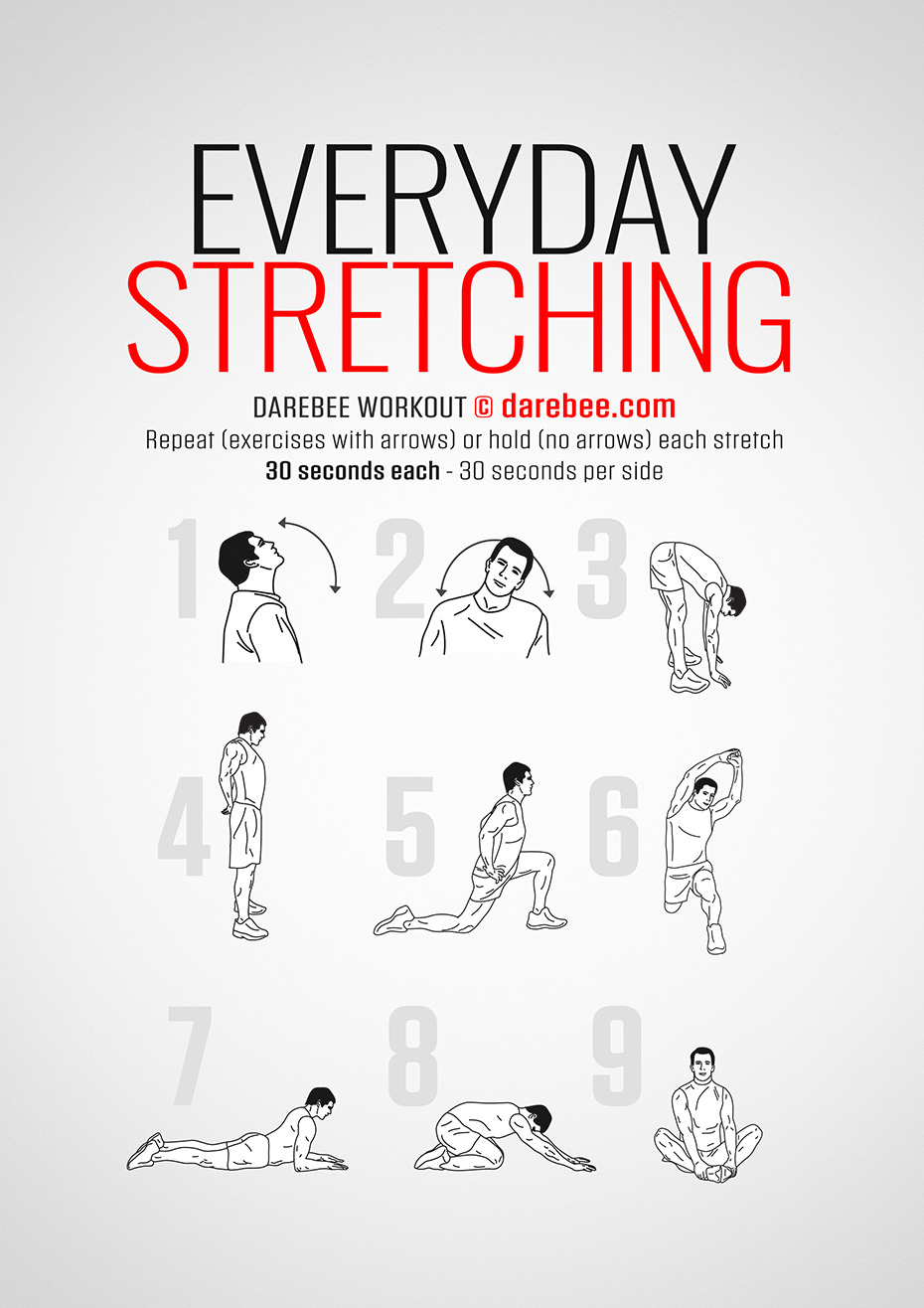News Blast: Your Daily Update
Stay informed with the latest news and trends.
Stretch It Like You Mean It
Unlock your body’s potential! Discover essential stretching techniques to boost flexibility and enhance your wellness. Stretch it like you mean it!
The Benefits of Stretching: Why You Should Stretch Daily
The benefits of stretching extend beyond just improving flexibility; they play a crucial role in overall health and well-being. Stretching regularly can enhance blood circulation, which helps deliver essential nutrients to your muscles and joints. This improved circulation can lead to better muscle performance, increased energy levels, and a reduced risk of injury during physical activities. Additionally, stretching can help alleviate tension and stress, promoting a state of relaxation that is vital for mental clarity and focus.
Another key reason to incorporate stretching into your daily routine is its ability to improve posture. Many of us spend long hours sitting at desks or in front of screens, which can lead to muscle imbalances and poor alignment. By consistently stretching, you can counteract the effects of prolonged sitting and strengthen your core muscles. As a result, you may notice decreased discomfort and an increase in mobility. Whether you choose to perform static stretches, dynamic stretches, or a combination of both, establishing a daily stretching routine is a simple yet effective way to enhance your overall quality of life.

Common Stretching Mistakes and How to Avoid Them
Common stretching mistakes can hinder your progress and lead to injuries. One frequent error is bypassing a warm-up before stretching. Cold muscles are less pliable and more prone to strain. To avoid this, always engage in a light warm-up for at least 5-10 minutes, such as brisk walking or jogging, before you stretch. Additionally, people often rush through their stretching routines. It's important to hold each stretch for at least 15-30 seconds to allow the muscles to elongate properly and maximize the benefits.
Another common mistake is overstretching, where individuals push their flexibility limits too far, leading to pain or injury. To prevent this, listen to your body and only stretch to the point of mild discomfort, not pain. Remember, stretching should feel good and not forceful. Lastly, neglecting proper technique can also lead to ineffective outcomes. Focus on maintaining good posture and alignment during each stretch. You can maintain your balance and form by engaging your core muscles, ensuring you're using the right muscles effectively.
How to Create a Personalized Stretching Routine for Your Needs
Creating a personalized stretching routine starts with identifying your needs. Consider factors such as your current fitness level, specific areas of tension or tightness, and your overall goals. For instance, if you spend long hours sitting at a desk, you might focus on stretches that open up the hips and relieve lower back tension. To get started, write down your main objectives, whether they include increasing flexibility, improving performance in sports, or enhancing overall well-being. This list will serve as a guide as you develop your routine.
Once you've assessed your needs, the next step is to select appropriate stretches that target the areas you want to improve. Here’s a simple framework to help you create your routine:
- Warm-Up: Begin with light activity for 5-10 minutes to increase blood flow.
- Target Areas: Choose 4-6 stretches focusing on specific muscle groups.
- Hold and Repeat: Hold each stretch for 15-30 seconds and repeat 2-3 times.
Finally, remember to listen to your body and adjust your routine as needed. Whether you incorporate yoga, static, or dynamic stretches, consistency is key to seeing improvement over time.